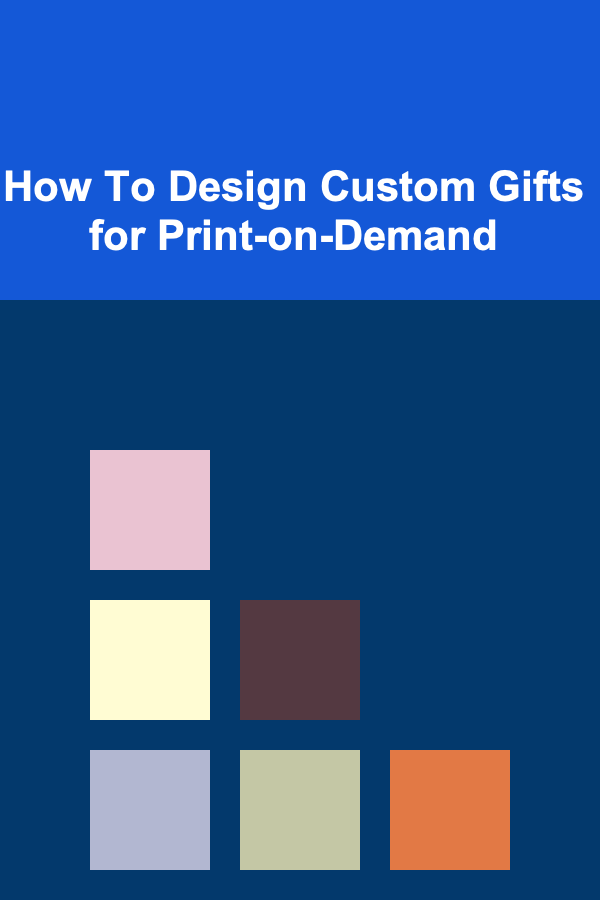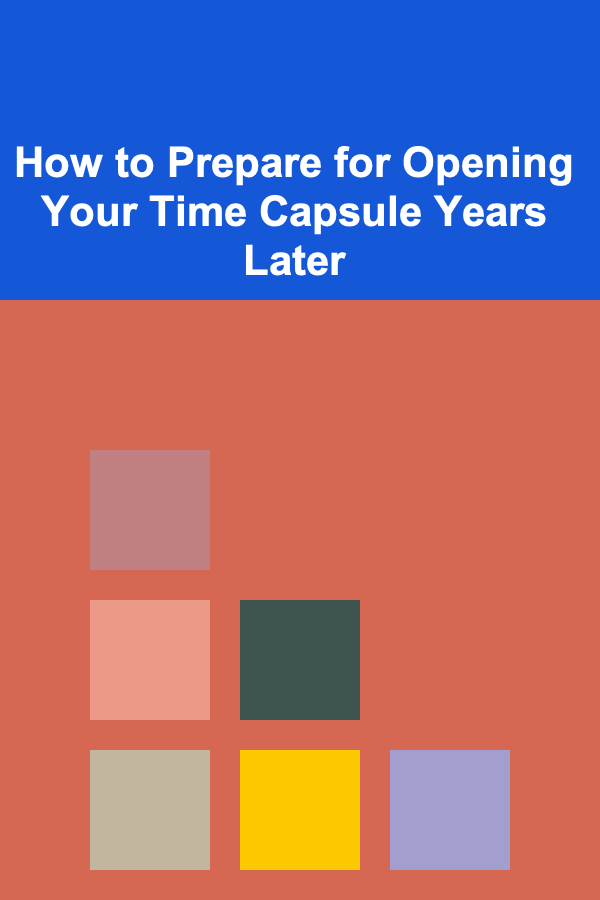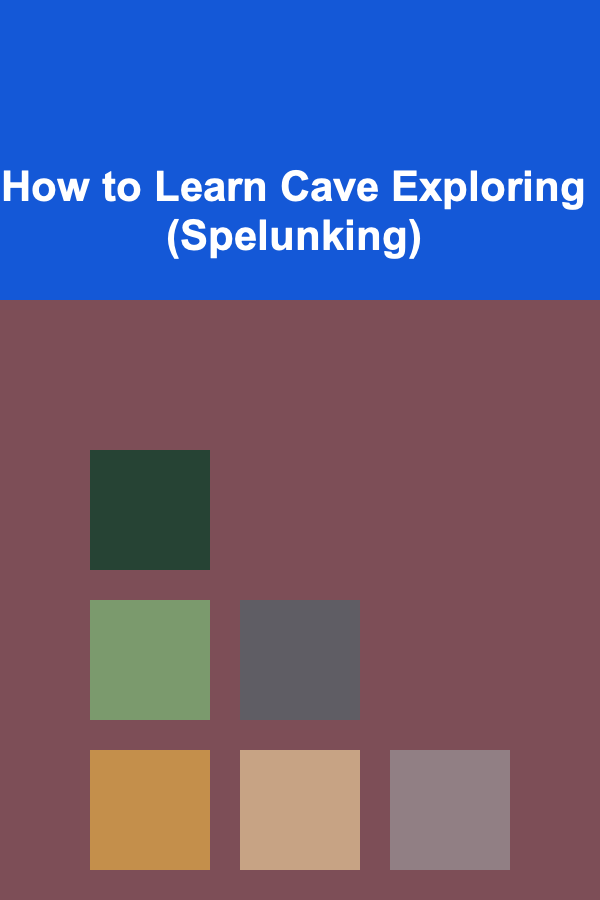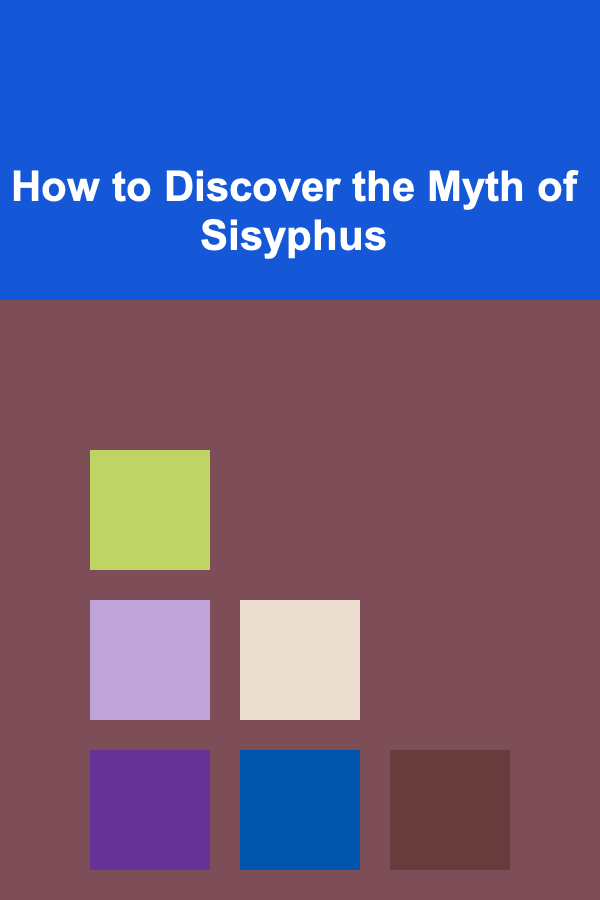
How To Design Custom Gifts for Print-on-Demand
ebook include PDF & Audio bundle (Micro Guide)
$12.99$8.99
Limited Time Offer! Order within the next:

The world of custom gifts has seen a massive rise in popularity, thanks to the print-on-demand (POD) business model. This model allows individuals and businesses to create personalized products without the need for large upfront investments or inventory. From custom mugs and T-shirts to phone cases and posters, the opportunities are endless. However, designing custom gifts for print-on-demand requires a creative approach, an understanding of the product, and the knowledge of how to translate your designs into high-quality, print-ready artwork.
In this comprehensive guide, we'll explore the steps involved in designing custom gifts for print-on-demand, from understanding the process to choosing the right tools, and crafting unique, marketable designs that will resonate with customers.
Understanding the Print-on-Demand Process
Before diving into the design phase, it's essential to understand how print-on-demand works. POD is a fulfillment method where products are printed only after an order is placed. This eliminates the need for bulk purchases and storage, which is perfect for entrepreneurs and creators looking to sell unique, custom products without risk.
Here's how it works:
- Choose a POD Platform: There are numerous POD platforms available, including Printful, Teespring, and Redbubble. These platforms allow you to upload your designs to a range of products, which they will then print and ship directly to the customer.
- Create Your Design: This is where the creativity comes in. Your design will be printed onto products like clothing, accessories, and home decor.
- Customer Places an Order: Once a customer selects a product with your design, they place an order.
- Printing and Shipping: The POD provider prints the design on the selected product and ships it directly to the customer.
This process reduces the risks associated with inventory management and allows for scalability in your business.
Choosing the Right Product for Custom Gifts
When designing custom gifts for print-on-demand, it's crucial to choose the right products. The product must be something that resonates with your target market and fits well with the design you have in mind.
Popular Products for Custom Gifts
- T-shirts and Apparel: Clothing items like t-shirts, hoodies, and socks are always popular choices. People love wearing customized items that showcase their personality or commemorate special occasions.
- Mugs: Custom mugs make excellent gifts for all types of celebrations, including birthdays, holidays, and anniversaries.
- Phone Cases: Personalized phone cases are another popular gift idea. People love protecting their devices with unique designs that reflect their style.
- Tote Bags and Backpacks: These items are versatile and practical, making them great candidates for customization.
- Posters and Prints: Custom art prints, including posters, canvas prints, and framed photos, are often purchased as gifts to add a personal touch to home decor.
- Jewelry and Accessories: Custom necklaces, bracelets, and keychains are highly sought-after as personalized gifts.
- Home Decor: Custom throw pillows, blankets, and wall hangings are great for individuals looking to give a personalized touch to their homes.
Product Selection Tips:
- Quality Matters: Ensure that the products you choose are of high quality. A good quality base product will not only make your design look better but also create a better customer experience.
- Market Research: Study what type of products are trending in the gift industry. For example, certain designs may work better on specific products (e.g., a quote on a mug versus a t-shirt).
- Target Audience: Consider who your target audience is. For example, a younger audience may prefer trendy, bold designs on clothing, while an older audience might lean more toward elegant, sophisticated items like personalized jewelry.
Designing for Print-on-Demand: Key Considerations
Designing for print-on-demand involves more than just creating a pretty picture. The design must be optimized for the specific product and the printing method. Here are several factors to keep in mind when creating custom gifts:
3.1 Understanding Print Areas
Every print-on-demand product has a specific print area where the design will be placed. Understanding the dimensions and limitations of this area is critical to creating a successful design.
- T-shirts: The print area for t-shirts typically covers the front or back. The design should be centered and sized appropriately.
- Mugs: For mugs, consider the curved surface. It's essential to ensure that the design wraps seamlessly around the mug, avoiding awkward breaks in the artwork.
- Posters/Canvas Prints: With flat products like posters or canvas prints, the design can often be larger and more detailed. Make sure to leave appropriate margins around the edges.
Knowing the print area helps avoid design mistakes and ensures that the product looks as intended when printed.
3.2 File Formats and Resolution
Print-on-demand companies usually require specific file formats and resolutions for high-quality printing. The standard file format is typically PNG (with a transparent background) or JPEG. You'll also need to make sure your design is high resolution (at least 300 DPI) to ensure clarity and detail in the final product.
Low-resolution images will appear pixelated or blurry when printed, which can detract from the overall quality of the gift. Always use vector files (such as .AI, .SVG, or .EPS) when possible, as these files can be resized without losing quality.
3.3 Color and Printing Techniques
The colors you use in your design should be optimized for the type of printing method used by your POD provider. Common printing methods include:
- Direct-to-Garment (DTG) Printing: This technique is typically used for clothing and textiles. It works best with full-color designs, but be mindful of how the design will appear on dark versus light fabrics.
- Sublimation Printing: Best for products like mugs, phone cases, and polyester-based clothing. This process works well with designs that cover the entire product.
- Screen Printing: Often used for large, bulk orders. It's best for designs with fewer colors, as the cost increases with the number of colors in the design.
It's important to note that colors may appear slightly different once printed, especially on various material types. Always check your POD provider's color guidelines and ensure your design looks great on different backgrounds.
3.4 Design Style and Trends
When it comes to creating designs for custom gifts, it's essential to stay current with design trends. Popular styles can help your products sell faster and appeal to a wider audience.
Here are a few design trends to consider:
- Minimalism: Simple, clean designs with few elements can be highly effective, especially for products like tote bags or wall art.
- Vintage: Nostalgic designs, retro typography, and old-school graphics are making a comeback on products like t-shirts and mugs.
- Hand-Drawn and Custom Illustrations: Unique, hand-drawn illustrations can set your designs apart and make them feel personal and authentic.
- Quotes and Typography: Inspirational, funny, or love-based quotes remain popular across multiple product categories. Use creative fonts to add personality to your designs.
- Bold Colors and Abstract Art: For modern and trendy designs, bold, bright colors, and abstract art can appeal to a younger demographic.
3.5 Incorporating Personalization
One of the key selling points of custom gifts is the ability to personalize them. Adding names, dates, or personal messages to your designs can make them feel unique and special.
- Names: Adding a customer's name or initials is a common way to personalize gifts like jewelry, clothing, or mugs.
- Dates and Milestones: Adding a significant date (e.g., birthday, wedding anniversary) to a design can create a meaningful gift.
- Custom Messages or Quotes: Offering the option for customers to input their own text or quotes allows them to create one-of-a-kind items.
Be sure to provide easy-to-follow instructions for customers who want to personalize their gifts, and ensure that the design allows for flexible customization without compromising the aesthetic.
Tools for Designing Custom Gifts
Creating high-quality designs for print-on-demand doesn't require expensive software or advanced skills. Several tools can help you design professional-looking artwork without the steep learning curve.
4.1 Graphic Design Software
- Adobe Illustrator: Ideal for creating vector-based designs. Illustrator offers a wide range of tools and options for creating detailed, scalable artwork.
- Adobe Photoshop: Best for photo-based or raster designs, Photoshop allows you to create detailed images with rich textures and effects.
- CorelDRAW: A popular alternative to Illustrator, especially for vector-based designs.
- Canva: A user-friendly design tool that is great for beginners. Canva provides templates and easy drag-and-drop features, which makes it easy to create stunning designs quickly.
4.2 Mockup Generators
Once your designs are complete, it's time to see how they will look on the actual product. Mockup generators help you visualize your design on a variety of items. Many POD platforms provide their own mockup tools, but you can also use third-party mockup generators like Placeit or Smartmockups.
4.3 Font and Color Resources
- Google Fonts: A wide selection of free, high-quality fonts.
- Adobe Fonts: A premium collection of fonts, especially for professional design work.
- Coolors.co: A color palette generator that can help you create cohesive color schemes for your designs.
Final Tips for Success
- Test Your Designs: Order samples from your POD provider to ensure your designs translate well to the final product.
- Market Your Designs: Use social media, influencer marketing, and paid ads to showcase your custom gifts. Build an audience around your designs to create a loyal customer base.
- Stay Creative and Adapt: Design trends change frequently, so keep an eye on new styles and be ready to adapt your designs to stay relevant.
- Keep Customer Experience in Mind: Focus on delivering excellent customer service, from the design process to packaging and shipping. A positive customer experience can lead to repeat business and referrals.
Conclusion
Designing custom gifts for print-on-demand can be an incredibly rewarding venture, whether you're starting a business or simply looking to create personalized gifts for loved ones. By understanding the POD process, choosing the right products, and optimizing your designs for print, you can create high-quality, unique gifts that resonate with customers.
With creativity, attention to detail, and the right tools, you'll be able to bring your custom gift ideas to life and take full advantage of the growing demand for personalized products.

5 Ways to Create a Passive Income Stream with Deep Learning
Read More
How to Involve Kids in Household Organization Tasks
Read More
How to Prepare for Opening Your Time Capsule Years Later
Read More
How to Stop Impulse Buying: Practical Tips for Cutting Down
Read More
How to Learn Cave Exploring (Spelunking)
Read More
How to Discover the Myth of Sisyphus
Read MoreOther Products

5 Ways to Create a Passive Income Stream with Deep Learning
Read More
How to Involve Kids in Household Organization Tasks
Read More
How to Prepare for Opening Your Time Capsule Years Later
Read More
How to Stop Impulse Buying: Practical Tips for Cutting Down
Read More
How to Learn Cave Exploring (Spelunking)
Read More